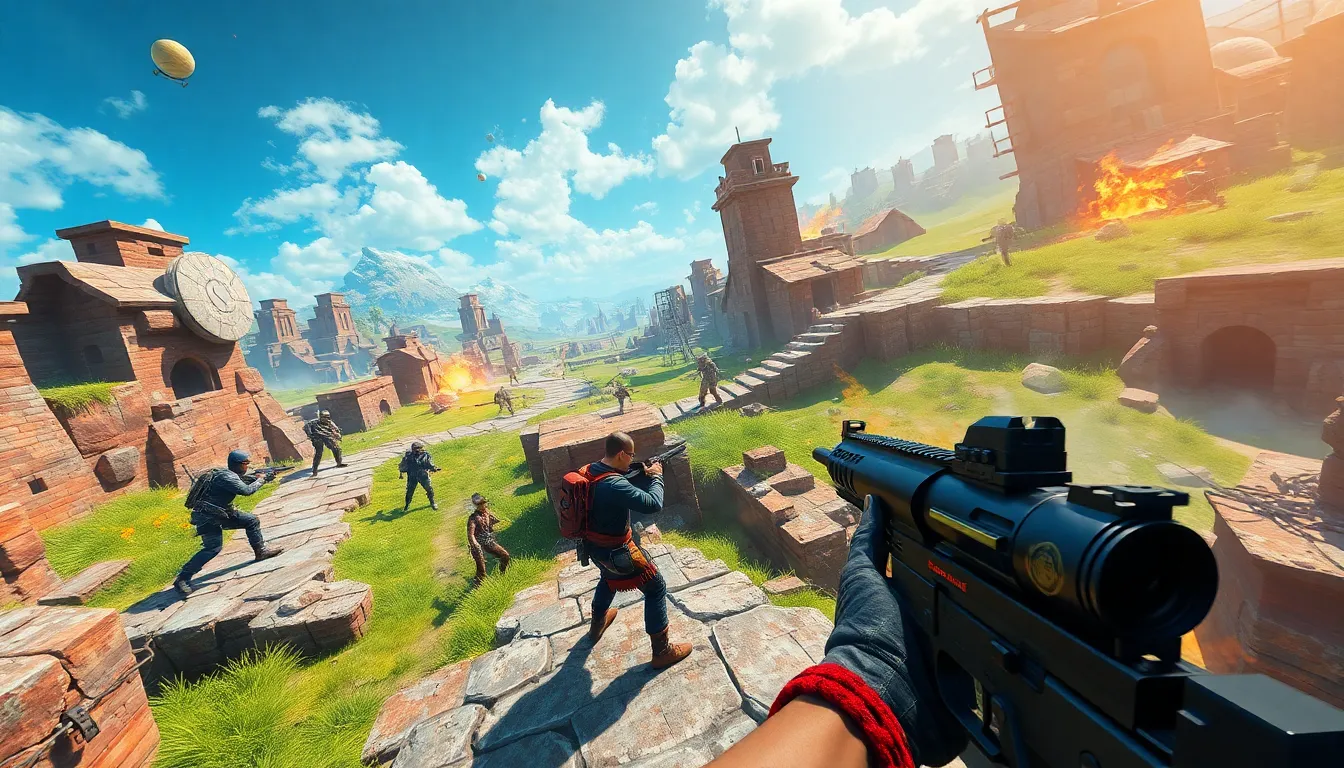Table of Contents
ToggleIn the fast-paced world of first-person shooters, nothing grinds players’ gears quite like a sneaky camper lurking in the shadows. Picture this: you’re charging headfirst into battle, adrenaline pumping, only to be taken out by a player who’s been sipping coffee in a corner for the last ten minutes. It’s enough to make anyone want to throw their controller out the window!
But fear not, fellow gamers! The days of allowing camping to ruin the fun are over. With innovative anti-camping strategies and game mechanics, developers are stepping up to ensure that every match is as exhilarating as it should be. Get ready to dive into the thrilling tactics designed to flush out those pesky campers and keep the action flowing. After all, who wants to play hide and seek when everyone’s here for the epic shootouts?
Overview of FPS Anti Camping
FPS games frequently face challenges from players who camp, disrupting the gaming experience. Developers recognize the issue and are implementing various strategies to counteract this gameplay style.
Definition and Importance
Camping refers to a tactic where players hide in one location, waiting to ambush opponents. This approach can create frustrating experiences for players who prefer action-packed encounters. Understanding anti-camping measures is crucial as they enhance the overall enjoyment of gameplay. Enforcing strategies to counter camping ensures that players engage in dynamic combat instead of stagnant game moments. Implementing these measures promotes competitive integrity and keeps matches exciting for all participants.
Common Issues with Camping
Camping leads to several common problems in FPS games. Frustration arises when players feel ambushed by hidden opponents, undermining motivation to play. Skill disparity becomes evident, as campers can secure easy kills against unsuspecting players. Additionally, excessive camping slows down gameplay, causing matches to feel tedious. Players often express dissatisfaction when matches lack pace and excitement. Game developers focus on these issues to refine the gaming experience by countering camping tactics effectively. Solutions promote quickened gameplay and encourage players to explore different strategies.
Types of FPS Anti Camping Techniques

Developers employ various methods to tackle camping in FPS games. Effective strategies enhance gameplay by encouraging active engagement among players.
Game Design Approaches
Game designers integrate specific mechanics into levels to reduce camping. Dynamic maps often feature destructible environments that disrupt hiding spots. Respawn mechanics can limit camping by forcing players to continuously adapt their positions. Additionally, time-limited power-ups can reward movement and exploration, incentivizing players to stay active. Creative map layouts with multiple pathways force campers to be more cautious and aware of their surroundings.
Player Behavior Management
Developers also utilize systems to manage player behavior effectively. Matchmaking algorithms pair players with similar skill levels, reducing the advantage campers may hold. Reward systems for active gameplay encourage players to engage more. Penalties for excessive camping can deter this behavior, promoting a more balanced playstyle. Community reports often help identify habitual campers, allowing for targeted modifications to improve overall player experience.
Popular Games Implementing Anti Camping
Several games have adopted anti-camping measures, enhancing the competitive experience in the FPS genre. These methods encourage movement, creating dynamic gameplay.
Examples and Analysis
Call of Duty: Activision’s series integrates killstreaks that reward aggressive play, discouraging players from remaining stationary. Halo: In this franchise, motion sensors reveal campers, prompting them to engage in combat. Battlefield: DICE employs destructible environments, allowing players to dismantle hiding spots. Each example showcases how developers incorporate strategies directly into gameplay to counteract camping.
Effectiveness of Each Method
Killstreak rewards in Call of Duty foster a more aggressive playstyle. Motion sensors in Halo effectively reveal hidden players, encouraging more active encounters. Destructible environments in Battlefield compel players to adapt their strategies, leading to a richer overall experience. These methods demonstrate significant effectiveness in reducing camping instances and enhancing player engagement across different titles.
Community Reactions to Anti Camping Measures
Players exhibit a range of responses to anti-camping measures in FPS games. Experiences vary, revealing the impact these changes have on gameplay.
Positive Feedback
Many gamers appreciate the introduction of anti-camping strategies. Improved gameplay dynamics keep matches exciting and fast-paced. Players enjoy mechanics that encourage movement and interaction. Killstreak rewards in Call of Duty incentivize aggressive play, fostering a more engaging environment. Similar features in Halo motivate campers to confront opponents rather than hide. Users frequently express gratitude for these innovations, noting that they enhance overall enjoyment and satisfaction.
Criticism and Controversy
Despite the positive reception, some players voice concerns. They argue that certain anti-camping measures can diminish strategic gameplay. Excessive penalties for camping may frustrate players who adopt tactical approaches. Some believe that the emphasis on constant movement undermines careful planning and team coordination. Controversies often arise around the balance between action and strategy. Discussions in community forums highlight diverse opinions, indicating that refining these measures remains a challenge. Balancing enjoyment and competitiveness continues to spark debate among gamers.
The Future of FPS Anti Camping Strategies
Developers continue to evolve anti-camping strategies in response to player feedback. Emerging technologies are changing the landscape of gameplay dynamics.
Emerging Trends
Virtual reality (VR) integration is gaining traction, allowing players to experience immersive environments that encourage exploration. Augmented reality (AR) features, found in some titles, motivate players to move and engage actively with their surroundings. Additionally, machine learning algorithms analyze player behavior, enabling developers to create personalized experiences that challenge and reward active gameplay. Instant feedback systems inform players about their performance, resulting in quicker adaptations to play style. As these trends advance, developers prioritize creating environments that discourage static gameplay.
Impact on Game Development
The focus on anti-camping measures shapes how developers approach design and mechanics in FPS games. Increased emphasis on player engagement drives developers to create more dynamic map layouts and interactive elements. Incorporating non-lethal deterrents, such as environmental hazards, pushes players to move frequently. Balancing offensive and defensive strategies leads to enhanced gameplay experiences. Developers also invest in community feedback mechanisms to refine game features that counteract camping effectively. Overall, these shifts ensure that FPS games remain fresh, competitive, and enjoyable for players who seek action-packed experiences.
The ongoing battle against camping in FPS games is crucial for maintaining the excitement and competitiveness players crave. Developers are committed to refining gameplay through innovative anti-camping strategies that encourage active engagement. As these measures evolve, they foster dynamic environments where players can adapt and thrive.
Community feedback plays a vital role in shaping these strategies, balancing enjoyment with competitive integrity. With advancements in technology and game design, the future looks promising for action-oriented gameplay. Players can anticipate a gaming landscape that prioritizes movement and interaction, ensuring that camping becomes a less viable tactic. Ultimately, these developments contribute to a richer and more exhilarating experience for all gamers.







